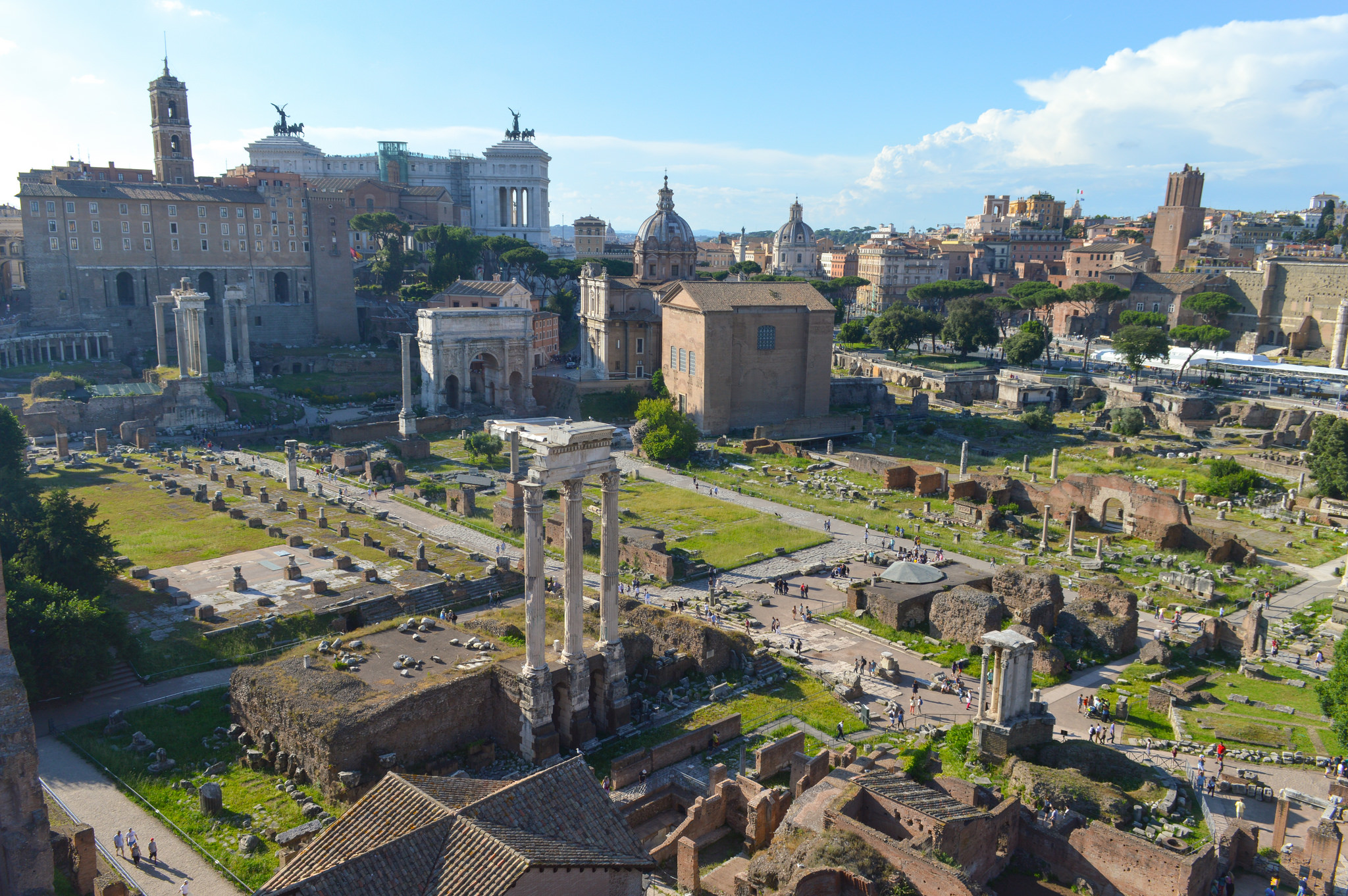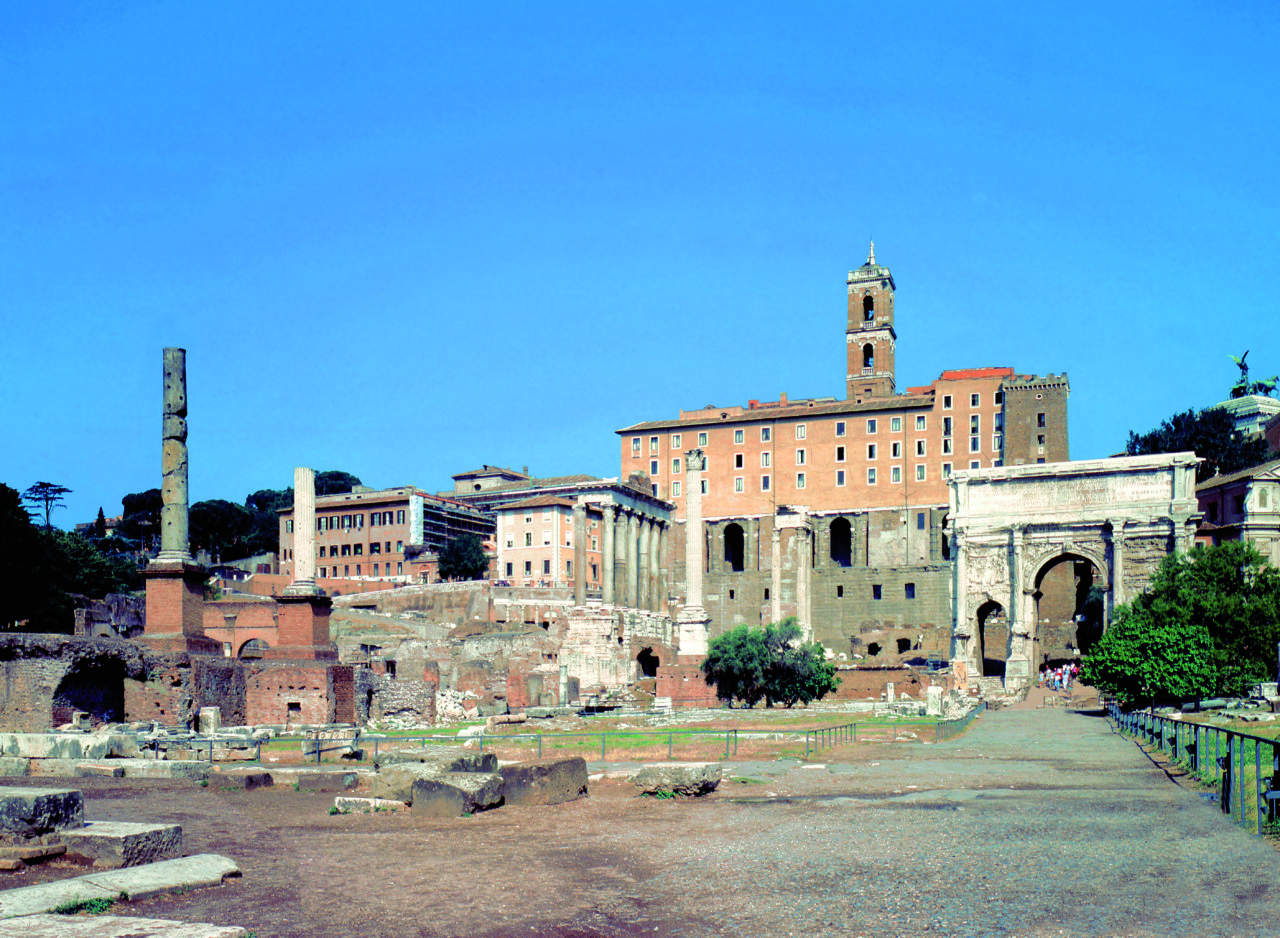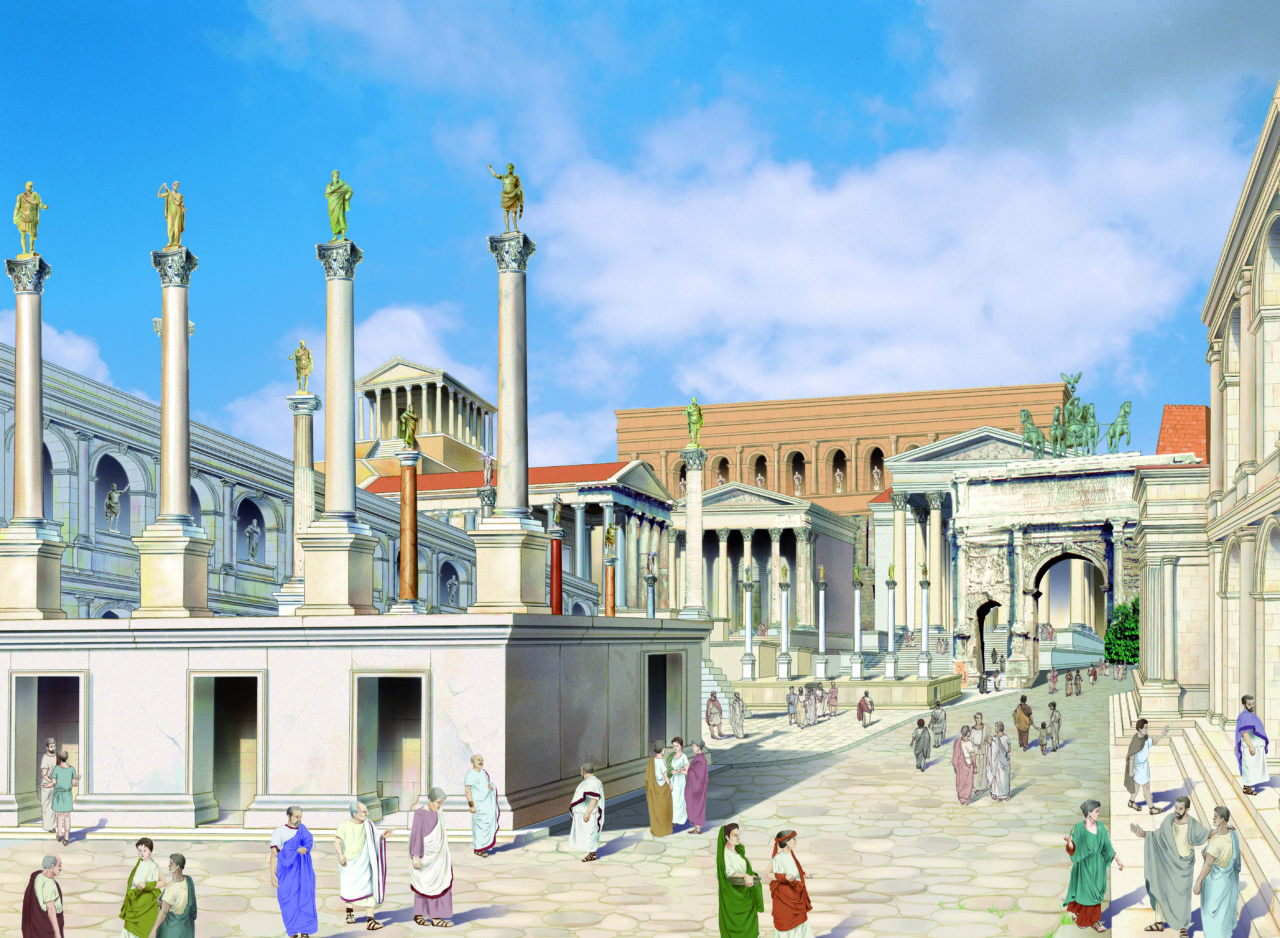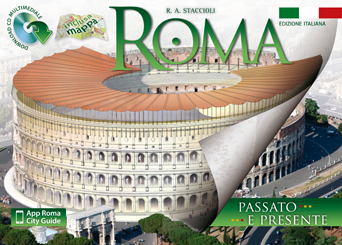The Forum Romanum was the commercial, religious, political and legal center of Ancient Rome, at any rate throughout the Republic, and remained a sacred and monumental area throughout antiquity.
Its origins are related the coalescing into a city of the primitive villages which had grown up on the higher parts of the surrounding hills.
The valley of the Forum, lying between the Palatine, the Capitol and the first slopes of the Viminal and the Quirinal, must itself have been affected, albeit marginally, by the presence of some modest nuclei of huts and by an extensive burial ground, dating back to the late bronze age and the early iron age.
Around about the end of the 7th Century BC, the Cloaca Maxima drained away its stagnant waters and it could thus be formally laid out and receive its first ‘paving’.

Photo credits: Francisco Anzola
From that time onwards, the part of the valley lying at the foot of the Capitol was set aside for political functions (with the construction of the Curia, for the meetings of the Senate, and the Comitium, for the assemblies of the people), while the remainder, much larger, came to play the part of the ‘square’ (the Forum in the proper sense of the term), where shops and market stalls intermingled with the city’s oldest sanctuaries, of Vesta, Saturn, Janus and Castor and Pollux.
A small sanctuary consisting of an altar, an honorary column and a tufa block with an inscription dating back to the 6th Century BC was interpreted as being the grave of the legendary founder, Romulus, and protected with big slabs of black stone (lapis niger).


The Via Sacra crossed the whole length of the square, whence it ascended to the Temple of Jupiter Optimus Maximus on the Capitol.
The construction of the first basilicas during the 2nd Century BC (the Porcia, the oldest, the Opimia, the Sempronia, and most importantly the Basilica Aemilia) further emphasized the Forum’s character as a political and administrative center, and it gradually assumed its definitive appearance.
The stages in this process were:
- the building of the Tabularium, seat of the state archives on the slopes of the Capitol (80 BC), providing the square with a monumental backdrop;
- the moving of the Curia and the Rostra (the platform from which the magistrates addressed the people) and the erection of the Basilica Julia in front of the Basilica Aemilia by Caesar, marking off the long sides of the square;
- and finally, the positioning of the Temple of Divine Caesar, ordained by Augustus, in order to close off the fourth side of the square.
The structure of the square remained unchanged for a long time. The construction of new buildings, such as the Temple of Vespasian and Titus and that of Antoninus and Faustina, built by Antoninus Pius in memory of his wife Faustina, who died in 141 BC, and subsequently dedicated by the Senate to the emperor himself, respected the Augustan layout.
The only breach in this convention was the erection of a gigantic equestrian statue of Domitian in the center of the square.
Only from the 3rd Century AD onwards was the Forum area once again invaded by commemorative and honorary monuments: the Arch of Septimius Severus, squeezed in between the Rostra and the Curia, the seven honorary columns lined up along the south side of the square, in front of the Basilica Julia, and the monuments commemorating the Tenth Anniversary (decennalia) of the Tetrarchy.
Indeed, it fell to one of these columns, the one raised in 608 AD in honour of the Byzantine Emperor Phocas, to become the last monument to be added to the Forum. But by that time the millenary glory of what had once been the most important place in Rome had long since faded away.

Do you want to know more about the history of the Roman Forum and see how it was originally during the roman empire?
Check out our guidebook to Rome, with detailed history and Past & Present images of the Pantheon, the Colosseum, Trajan’s Market and all the greatest historical and archaeological sites of the eternal city.
Where is the Roman Forum
The Roman Forum is located here:
Useful information for the Roman Forum
Here are some useful information for visiting the Roman Forum:
- Tickets and opening hours: http://archeoroma.beniculturali.it/en/tickets
- More info: https://en.wikipedia.org/wiki/Roman_Forum

